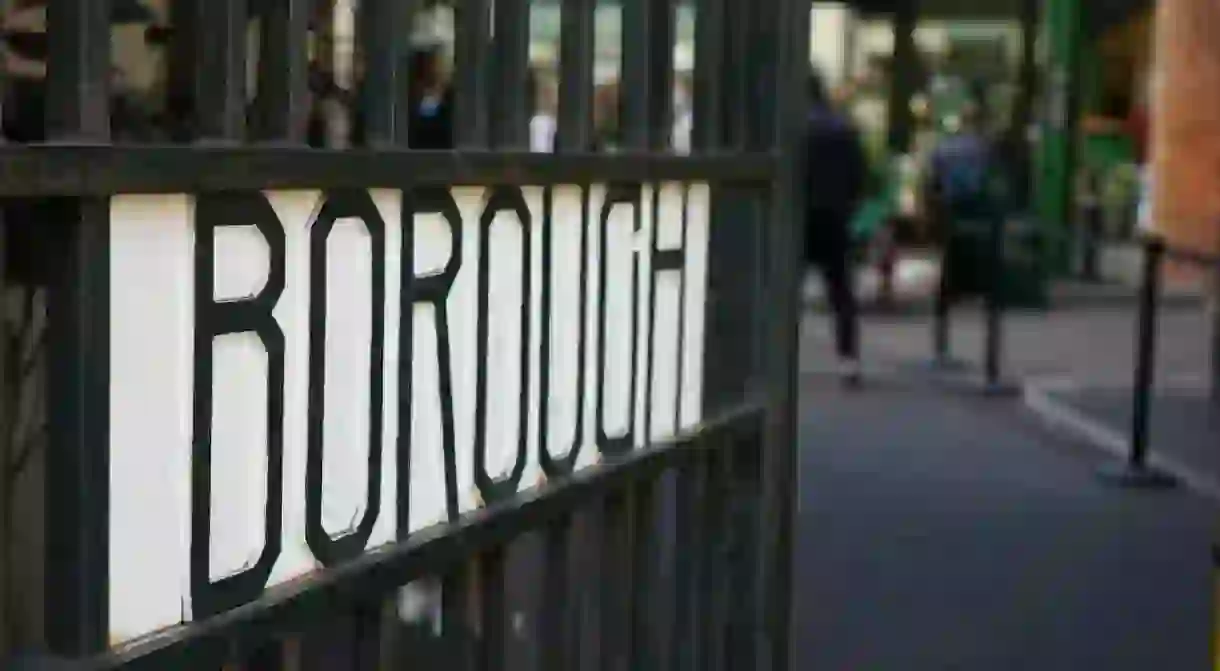The 11 Coolest Neighbourhoods in London

London is forever changing as new generations and cultures arrive in the irrepressibly funky capital. While areas such as Knightsbridge, Chelsea, Hampstead and Mayfair retain their luxury hallmarks, hungry hipsters with drive and creativity are leaving their stamp on once undesirable parts of town where rents are affordable and commercial space is plentiful. Pour yourself a craft beer or cold-drip coffee and explore the hippest neighbourhoods in town.
Brixton
Architectural Landmark

For years, Brixton has been a favourite south London going-out spot with Electric Brixton leading a number of live music and DJ venues. More recently, it’s become the go-to hangout during the day, too. Brixton Market and Brixton Village – two labyrinth-like indoor markets – are crammed with boutique shops, cafes, bars and restaurants such as Pop Brixton, which dishes up sizzling street food, craft beer and cocktails in repurposed industrial containers. Nearby Brockwell Park is a pretty place to idle away a balmy afternoon.
Peckham
Architectural Landmark

A couple of decades ago, you’d be advised to scoot straight through Peckham on the 36 bus as there was so much crime. Fast-forward to a new century, and a fresh younger generation, priced out of more central areas, has made the place one of London’s coolest neighbourhoods with its thriving art scene. The car-park rooftop bar Frank’s, indie-store scene around Bellenden Road and chic cafes will ensure you won’t spend time in central London bars ever again.
Dalston
Architectural Landmark

East-end Dalston has been hip for years, and while the edgier Peckham is nipping at its designer heels, the area is not about to become staid and stuffy just yet. At weekends, the streets are filled with out-of-town kids looking for clubs, but the arty vibe that put Dalston on the map in the early millennium is still there. Get off the Kingsland Road main drag to discover literary cafes, community gardens and more pop-up supper clubs than you can shake a cocktail stick at.
Borough Market
Market, Deli, British, Healthy

Stoke Newington
Architectural Landmark

In the early 1990s, Stoke Newington was gentrifying as the upwardly mobile moved into the spacious terrace houses lining raffish Church Street. Now with its own literary festival, it’s where cool kids with careers and children move to. The area’s reputation is assured by indie boozers, posh pizza parlours, underground cocktail bars and some of the best charity shops in the city.
Walthamstow
Architectural Landmark

Established in the 1990s by the band named after its E17 postcode, Walthamstow has benefitted in recent years from the extortionate house prices in adjacent Hackney. People who want more than a box to live in have moved to this creative, trendy neighbourhood. As a result, it’s evolved into a hive of community and arts festivals, which support a booming network of new artists and neon art gallery God’s Own Junkyard. Epping Forest and Hackney Marshes are on your doorstep and you can still be in Oxford Street in 30 minutes by tube.
Notting Hill
Architectural Landmark

Despite the throng of tourists coursing up and down Portobello Road, Notting Hill still has plenty of that scruffy, bohemian charm that made it cool in the first place. Portobello Market is one of the main draws for eclectic antiques collectors but Westbourne Grove, Ladbroke Grove and Westbourne Park Road are worth exploring too. Every August, the Notting Hill Carnival celebrates the area’s large Afro-Caribbean population with a long weekend of festivities.
Kensal Rise
Architectural Landmark

In the 1980s you couldn’t have paid hipsters to live here. Nowadays, British pop stars have moved into its leafy streets and big houses – just a taxi hop from Central London. Spread out between Ladbroke Grove and Queen’s Park, the neighbourhood blends posh North London with down-to-earth haunts. We’re talking punk-rock pubs, indie cinemas (The Lexi is one of London’s best) and celeb-friendly bar Paradise by way of Kensal Green – a great choice for either a Sunday roast or a late-night boho knees-up.
Hackney Wick
Architectural Landmark

Hip Hackney Wick, known reverentially as the Wick, is Hackney’s slightly artier sister. The action takes place in a burgeoning collection of warehouses along Regent’s Canal and the Olympic Park site. Within the past decade or so, craft breweries have muscled in alongside art galleries, club spaces and restaurants. Watch the barges chug up and down the canal while sipping an East London distilled gin on a summer’s day – you can’t beat it.
Soho
Architectural Landmark

Still crazy after all these years, Soho has always been the West End’s vibrant nightlife hub. As well as lively nightclubs, you’ll find sophisticated little bars such as Bar Termini in Old Compton Street, great restaurants such as Venice-inspired Polpo and dozens of quirky boutiques to browse in. At Berwick Street Market (one of London’s oldest which has been running since the 18th century), you can pick up everything from sticky Danish pastries to Mexican burritos or Egyptian pita sandwiches.
Tooting
Architectural Landmark

A couple of tube stops south of Clapham, Tooting is a young, vibrant neighbourhood on the rise. With an ethnically diverse population, the food scene is fresh and exciting – especially Tooting Broadway Market, where you’ll find everything from Venezuelan street food to Mauritian dishes and Caribbean curries. Check out buzzy gastro pubs such as the Rose and Crown, which does excellent pizza in a wood-fired oven, and the Tooting Tram & Social club and music venue.
Alex Allen contributed additional reporting to this article.













